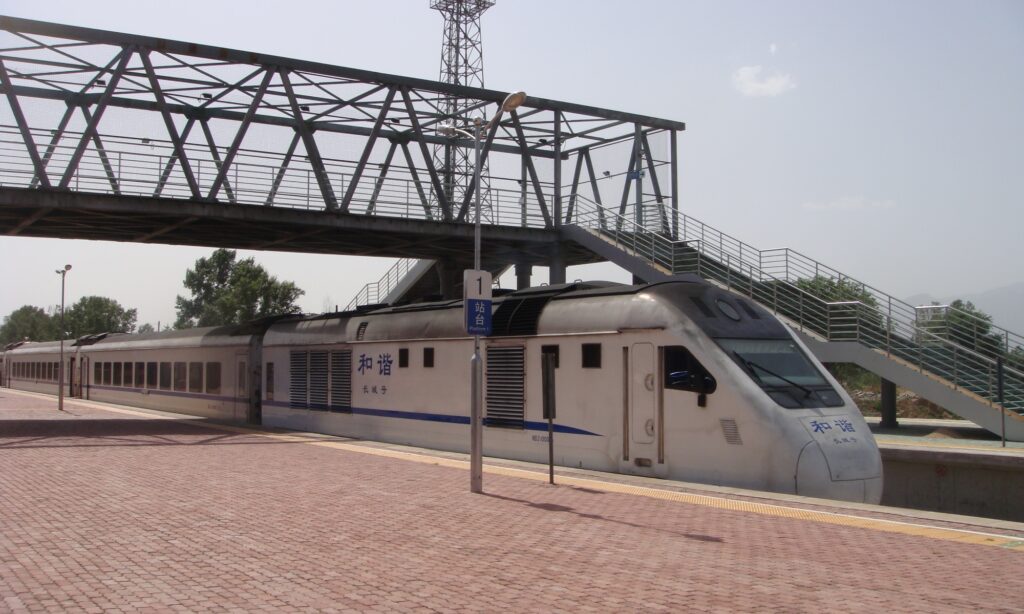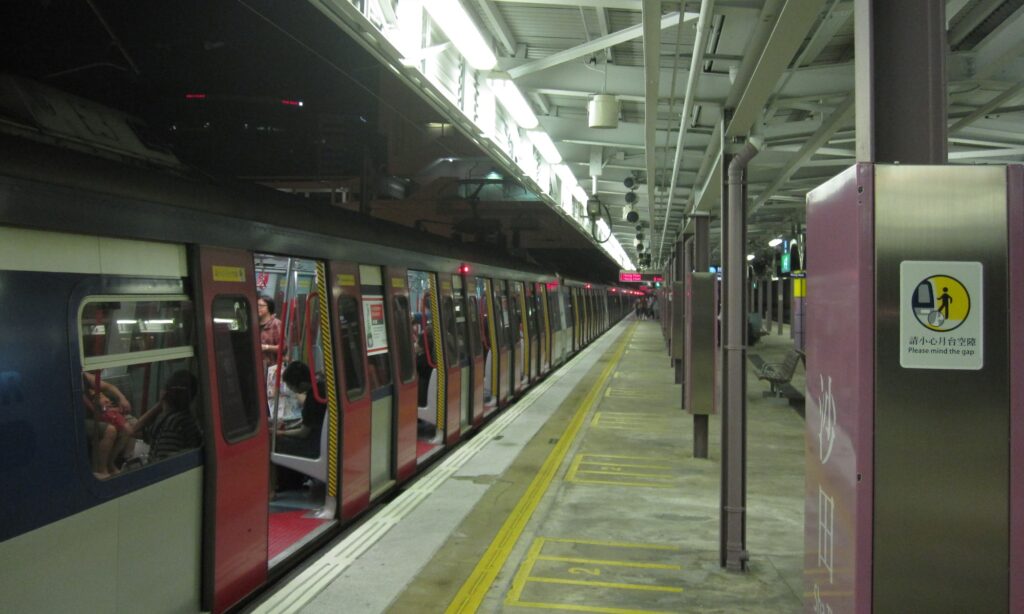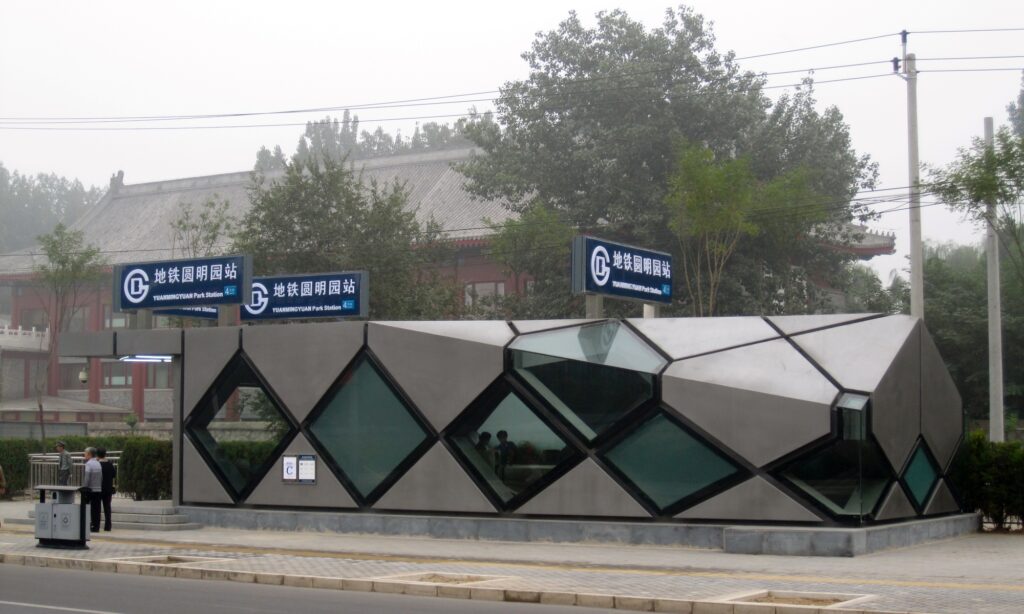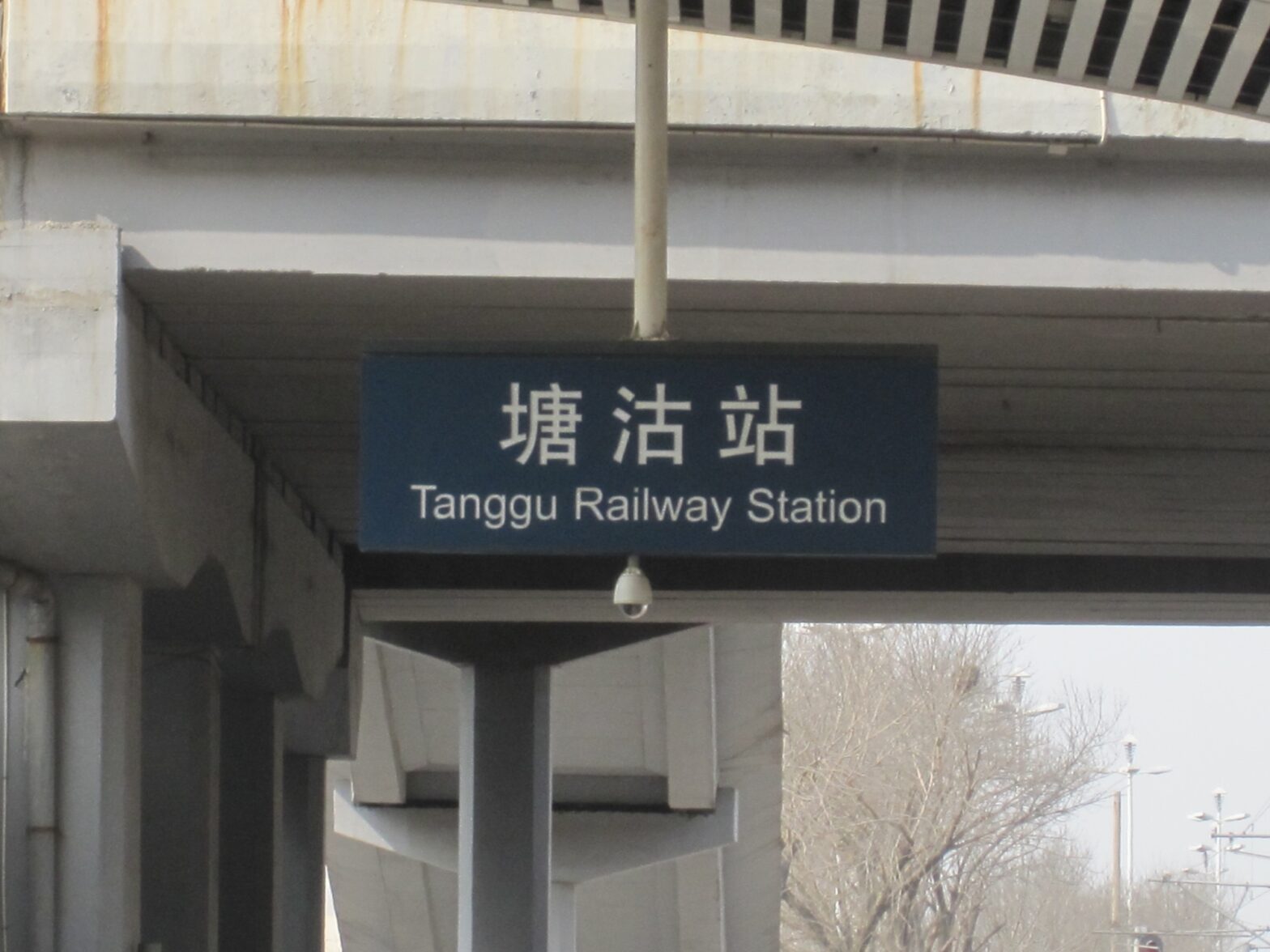Tanggu, Nanjing, and Beyond
The year 2009 saw David’s first train trip to destinations beyond Beijing or Central Tianjin. As he discovered that his favourite intercity service now served Tanggu, by the coast, he started travelling on these trains instead — a clear change of scenery from the mountains surrounding Beijing.
He also “discovered” Beijing Suburban Railway Line S2 to the Great Wall and Yanqing, which departed from Beijing North station. These services travelled on the Beijing-Zhangjiakou Railway, an epic rail classic in China.

David planned his mid-July 2009 escapade carefully. After experiencing darkness just around 09:30 in the morning (due to the Shanghai solar eclipse), he next boarded a Shanghai Metro Line 1 train to the city’s main station, then a CRH Harmony Express train to Nanjing, where he next took the metro to Central Nanjing. The availability of hassle-free rail-to-metro connections made it far easier for David to discover new cities, allowing him to “set his pace” and avoiding the sometimes much dreaded taxi stand queues.
In late December 2009, China’s first long-distance HSR route opened between Guangzhou and Wuhan. While he wasn’t there on Day One, he would be there the very next year, as 350 km/h (217 mph) HSR started to “go big” nationwide. The network would continue to grow even through to the present day.
David also gave Southern China a visit — and this also included a visit down to Hong Kong, where he travelled with a local metro enthusiast on the West Rail Line and Light Rail services in the New Territories. In Guangdong, he jumped onto a Guangzhou Metro Line 2 train at Sanyuanli, then navigated his way via that line and Line 1 to his destination for an onward connection by another means of transport.

He has travelled extensively in the city metro networks of Beijing, Tianjin, and Shanghai this year. Gearing up well in advance for the 2010 Shanghai Expo, David travelled to all stations of the Phase 2 section of Line 8 (Yaohua Road – Aerospace Museum, now Shendu Highway), as well as travelling on Lines 7 and 9, and most lines and stations in Central Shanghai — both in Puxi, and in Pudong, including the four-line Century Avenue interchange. He’s also been on the Maglev a number of times to and from PVG (Pudong International Airport).
David’s been to all Line 1 stations in Tianjin from Tianjin West station (Xizhan) through to and including Xiawafang, which lie under the busiest parts of Central Tianjin’s Nanjing Road. Additionally, he’s also taken high speed services to other parts of the centrally-governed municipality, including Wuqing and Tanggu. The year 2009 would also see another first for David: a trip on Line 9, otherwise known as the Binhai Mass Transit line.
David’s also been on Beijing’s new Line 4, operated by Beijing MTR. He was given permission to visit stations in advance, and used data collected to create a mobile device-friendly website, now part of the Tracking China site. The new Line 4 provides Subway services to the increasingly busy Beijing South Railway Station, and has been very popular with riders from the start.
Outside of stations, he has taken an increased interest in the great number of new lines and stations being built, all to open up in the coming years.

2009 Travelogue
National railway networks
5’663.55 km (45 journeys)
China Mainland: Beijing, Nanjing, Shanghai, Tianjin
Urban rail/Metro networks
China Mainland: Beijing Subway, Guangzhou Metro, Nanjing Metro, Shanghai Metro, Tianjin Metro
Hong Kong: MTR
